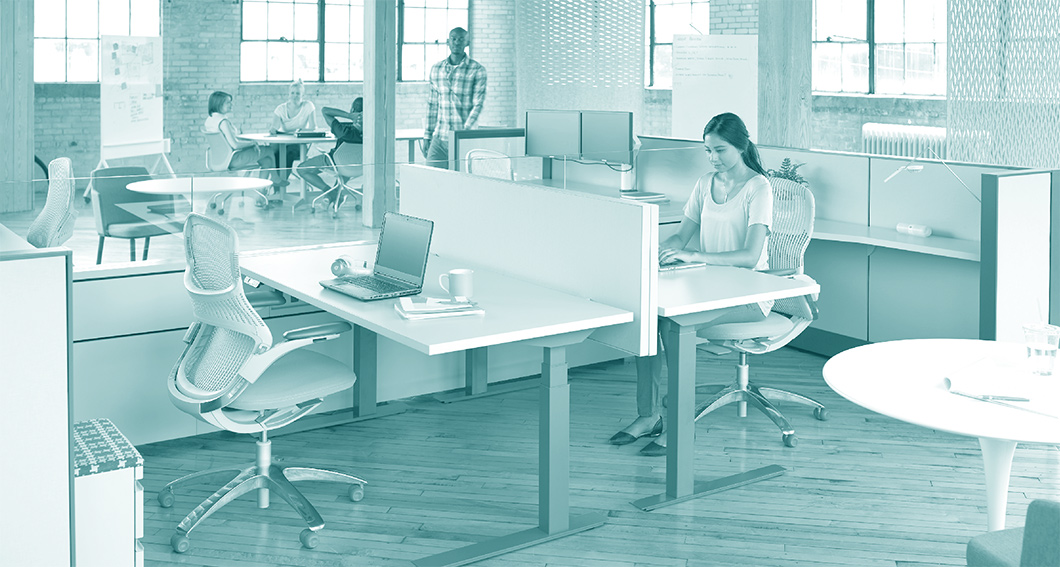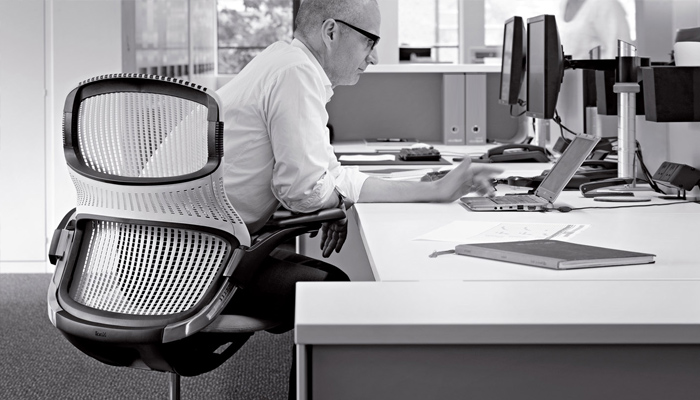
Cost considerations and space utilization can direct an organization’s decision to move from private to mostly open space. However, achieving strategic goals and supporting a firm’s mission, brand message and culture often play a more significant role. By improving collaboration and communication, flattening hierarchies and eliminating siloes, open environments can catalyze the innovation businesses seek.
Removing barriers and creating a more efficient footprint brings additional benefits. Open office environments can enhance workplace flexibility and provide the agility to meet evolving business needs. Infusing a workplace with natural daylight helps achieve sustainability and wellness initiatives.
Transforming a workplace to a more open setting creates an opportunity to drive other organizational changes. A successful approach to the shift is pragmatic, holistic and begins well in advance of occupancy. It continues through the actual transition and includes regular updates and check-ins. Developing and introducing appropriate guidelines, expectations and etiquette to the workforce will help streamline your firm’s adjustment to its new environment, minimizing downtime and lowering stress levels. This paper provides advice on the process for developing workplace protocols and presents an example of guidelines for a hypothetical company that addresses some typical hot button issues.
Simple Process for Developing Workplace Protocols
Before the move
- Gain leadership support and sponsorship. An effective shift begins at the top. Active and visible leaders play a critical role in times of change. It is important to involve them early in the process as they provide the authority and influence necessary for a successful workplace change. An employee’s direct manager also plays a significant role in providing specific information and reinforcing change principles.
- Introduce the open office concept. Using multiple forms of media and approaches, educate employees on the changes taking place and the business reasons for the change. Maintain a positive, informative tone while highlighting ways it will benefit them as well as the organization.
- Initiate a transition from the old environment to the new. Provide the support and tools necessary to assist employees in the change. For example, shredding and scanning materials ease the move to digital records. Consider offering incentives or sponsoring a companywide contest for purging physical files.
- Involve employees in creating guidelines. Including employees in the process will further engage them, solidify “buy-in” and sidestep a perception that change is “being done to them.” An appropriate level of engagement can give employees a voice, without setting unrealistic expectations of influence.
- Assemble a small group of employees who represent different areas of the business that will be moving to the new space.
- Using the sample guidelines we have provided, brainstorm a list of no more than 5 to 8 issues relative to adopting an open workplace that the group feels should be addressed. Within that list, include these three areas of concern: audible distractions, privacy and uninvited interruptions.
- Employee representatives can then solicit input from co-workers on the specific issues, such as common sources of noise in the office, and the collective team can create a short “rule” or guideline that addresses each issue. Some issues may require more than one guideline.
- Consult with Human Resources to assure compliance. Your Human Resources representative should be involved to ensure that any guidelines you create align with existing policies.
- Confirm that the appropriate infrastructure is in place. Security and shared spaces reservation systems should be functional; individual and team workspaces should be fully equipped and accessible. Storage and supplies should be available. All elements of technology, including hardware, power and connectivity, must be available, serviceable and reliable. Be sure to provide proper training to employees and managers on how to use new spaces and technologies.

During the move
- Deliver guidelines. Use the release of guidelines as an opportunity to reiterate your message and celebrate the mission. Depending on the number of employees involved in the change, you can incorporate the guidelines with other training meetings related to the move. If that is not practical, the guidelines can be posted on the corporate intranet and/or presented via "lunch & learn," webinar, town hall or other method appropriate to your organization’s size and culture. Guidelines should also be a component of onboarding materials for new hires.
- Make the change a positive experience. Celebrating the move process with events and consistent visuals and messaging acts to reinforce a positive experience. Consider providing a welcome letter from leadership and a small office-related gift to each employee on move day.
- Distribute all essential materials and guides. In addition to the sample guidelines presented, develop a printed series of handouts such as office plans, technology instructions and codes, and any other needed guides that employees can refer to.
On move day, have staff on-hand to resolve problems and answer questions.
- Lead by example. Managing a successful change starts in the C-suite. Encourage all levels of the organization to follow the suggested guidelines on a daily basis. Users will be more inclined to accept their new workstyle upon seeing senior leaders adopting the new workplace norms.
After the move
- Monitor and adjust. Assess the successes and shortcomings of the change process. There is no substitute for regular face-to face conversations and walking around to see if policies are working and being adhered to.
Build in means for users to submit feedback on how they feel the guidelines are working after about 90 days. Based on insights learned, policies can be tweaked as needed.
A well-executed plan will aid in acceptance of a new environment. Moreover, knowing their input was considered and future feedback welcomed will engage and encourage employees to embrace their new space.
Download "Open Office Etiquette" and Sample Guidelines





















